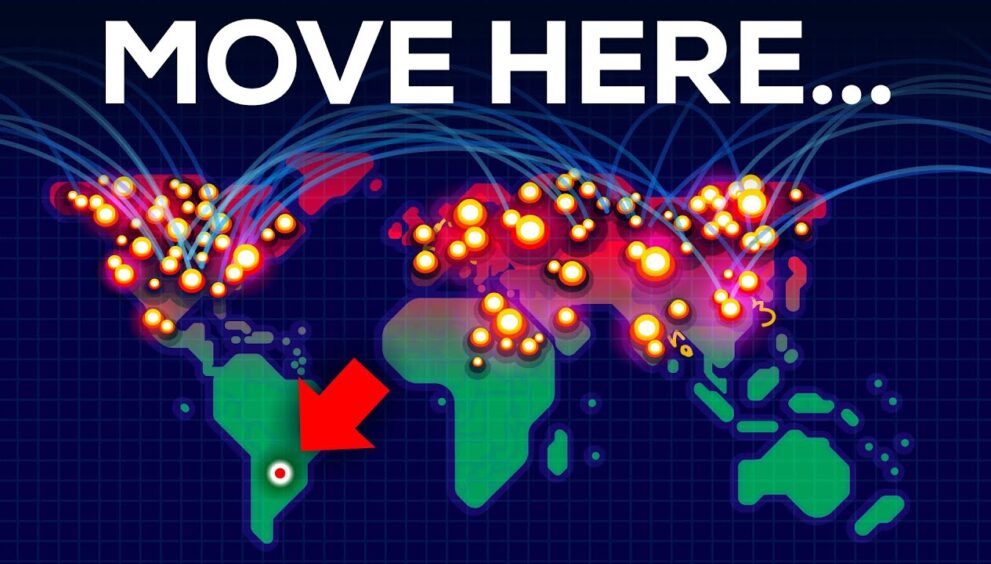To Survive a Nuclear War: The Devastating Impact on Humanity

Introduction
Nuclear war has the potential to forever split human history into two distinct periods: before and after the post-war apocalypse. The immediate destruction caused by nuclear weapons is horrifying, with mass fires consuming vast areas and killing hundreds of millions within hours. However, the aftermath holds an even more terrifying prospect—a nuclear winter that could potentially collapse our civilization completely. In this blog, we will explore how nuclear winter works and what it would look like.
Fire Causes Winter
When a nuclear weapon is detonated, an extremely hot gas bubble, hotter than the sun, is forced into existence. This intense heat causes everything within kilometers of the explosion to immediately catch fire. The resulting shockwave from the explosion creates a devastating impact, breaking and setting numerous things on fire. In the worst-case scenario, this can turn into a firestorm that engulfs everything and everyone on the ground.
Following the explosion, a massive mushroom cloud rises over the destruction, but what comes after is far more deadly. The fire burning cities, forests, or fields generates so much heat that it creates its own microclimate and wind system. The hot air and smoke rise, drawing in fresh air from the surroundings and stoking the flames further. This process forms a colossal cloud known as a pyrocumulonimbus cloud, which carries soot and aerosols from the flames high into the stratosphere.
Under normal circumstances, soot from a fire is quickly washed out by rain, but a pyrocumulonimbus cloud can reach altitudes where rain clouds don’t form. As a result, the soot can stay aloft for years, creating a blanket of darkness in the atmosphere.
Winter Causes Hunger
The severity of nuclear winter is still an area of active research and depends on various factors. However, it is important to note that nuclear winter is not permanent and does not result in a new ice age. The effects on the climate only last as long as the soot remains in the atmosphere, which is approximately a decade until it clears out and temperatures normalize. However, during this period, the climate undergoes rapid and significant changes that disrupt our ecosystem.
Winters become longer, summers become shorter and colder, or disappear altogether. The reduction in evaporation over the oceans leads to less rain and potential large-scale droughts. This disruption in the climate system has a profound impact on agriculture, which heavily relies on sunlight.
The majority of humanity lives in the midlatitudes, an area with the ideal temperature for our species. This region also happens to be the most suitable for growing the crops we depend on for sustenance. However, in the event of a full-scale nuclear war, the temperatures in the midlatitudes could stay below freezing for several years, rendering the land incapable of supporting any form of vegetation. This would result in a catastrophic collapse of food production.
Furthermore, modern industrialized agriculture relies on complex supply chains, including industrially produced fertilizers and chemicals, specialized machinery, and functioning infrastructure. After a nuclear war, these essential components would likely be severely damaged or completely destroyed, further exacerbating the global food crisis.
Actual Nuclear War
Scientists frequently consider two potential nuclear conflicts when assessing the impact of nuclear war: a war between India and Pakistan and a war between the United States and Russia. The immediate explosions in a smaller-scale nuclear war, such as one between India and Pakistan using low-yield weapons, would result in the deaths of approximately 27 million people. The resulting disruption to the climate, though not a nuclear winter, would still be severe enough to potentially starve 250 million people worldwide.
Unfortunately, India and Pakistan have been engaged in an arms race, increasing the number and power of their nuclear weapons. If the conflict escalates to a war with hundreds of nuclear weapons, millions of people would perish, and a nuclear winter would significantly damage global agriculture, cutting available calories for humanity in half. The number of people who would starve to death could reach as high as 2 billion, equivalent to one in four humans alive today.
The worst-case scenario involves a full-scale global war between NATO nations and Russia or China, both of which are expanding their nuclear arsenals. In a war of this magnitude, thousands of nuclear weapons could be detonated, causing unimaginable death and destruction. The resulting nuclear winter would reduce human calorie production by up to 90%, decimating agriculture and taking at least a decade for the climate to recover. Recovery would be particularly challenging due to the destruction of the regions that produce most of the world’s food.
In such a catastrophic scenario, the global death toll from starvation could rise to approximately 5 billion within two years. Mid-latitude countries like Russia, China, Canada, the U.S., and much of Europe would see only a few percent of their population survive. The world would be left in ruins, and the survivors would face the daunting task of rebuilding civilization from scratch.
The Aftermath and the Future
The impact of nuclear war would leave the world extremely unpleasant for a long time, and the number of casualties would be impossible to determine accurately. Human civilization would likely collapse, and the survivors would be left to slowly rebuild a world scarred by the devastating effects of nuclear war. The question arises whether, once civilization is rebuilt, humanity would ever choose to develop nuclear weapons again.
It is imperative that we take every possible measure to prevent nuclear war from happening. Organizations and individuals dedicated to reducing the risk of nuclear conflict play a critical role in ensuring a safer future for humanity.
Conclusion
Nuclear war has the potential to obliterate civilization as we know it. The destructive power of nuclear weapons, coupled with the devastating consequences of nuclear winter, paints a grim picture of the future. The importance of nuclear disarmament and global efforts to prevent such a catastrophe cannot be overstated. Let us work together to ensure that nuclear war remains a distant nightmare, never realized.
This blog was created using a transcript from a video by Kurzgesagt – In a Nutshell. Open Philanthropy supported the production of the video. For further reading and expert recommendations on reducing the risk of nuclear war, please refer to the provided sources and additional reading materials.
Thank you for reading this blog. We hope it has shed light on the devastating impact of nuclear war and the importance of preventing such a catastrophic event.
Disclaimer: The views and opinions expressed in this blog are based on the information provided in the video transcript. The author of this blog is not affiliated with the video’s creator.
Made with VideoToBlog


























































































































































































































































































































































































































































































































































































































































![Fixing [pii_email_aa0fea1a78a192ae7d0f] Microsoft Outlook Error](https://www.huffenpost.com/wp-content/uploads/2023/03/What-Causes-the.jpg)
![Fixing [pii_email_aa0fea1a78a192ae7d0f] Microsoft Outlook Error](https://www.huffenpost.com/wp-content/uploads/2023/03/How-to-fix-the-1-1024x1024.webp)
![Quick fixes for the [pii_email_dbd9dd084703ead3b9cf] Mail Error](https://www.huffenpost.com/wp-content/uploads/2023/03/How-to-Avoid-pii_email_b6b14f95f44a83737071-Outlook-Error-1024x576.jpg)
![How to fix the [pii_email_bbf95bff57a974a71da8] in Microsoft Outlook?](https://www.huffenpost.com/wp-content/uploads/2023/03/How-To-Solve-The-pii_email_9e750e335dfd9d75badb-Outlook-Error.webp)
![How to solve the [pii_email_b6b14f95f44a83737071] Outlook Error](https://www.huffenpost.com/wp-content/uploads/2023/03/How-to-Avoid-pii_email_b6b14f95f44a83737071-Outlook-Error.png)
![Ways to fix the "[pii_email_1fb861393abed78ab415] Error](https://www.huffenpost.com/wp-content/uploads/2023/03/pii_pn_56e685559f213991c933-Error-Causes-and-Solutions2.jpg)
![How to Fix the [pii_email_e2f55b4aa7bb667da6d9] Error](https://www.huffenpost.com/wp-content/uploads/2023/03/How-to-fix-the.webp)
![What Everyone Should Know About [pii_email_59ea919492dfc2762030]](https://www.huffenpost.com/wp-content/uploads/2023/03/pii_email_aa0fea1a78a192ae7d0f-Email-Error-and-Its-Solutions-1024x683.jpg)
![How to Fix the [pii_pn_5359771d15a46e7b88bf] Outlook Email Error](https://www.huffenpost.com/wp-content/uploads/2023/03/pii_email_57a4a2f20ec6813a8481-SMTP-Error-Solution-2.jpg)


























































































